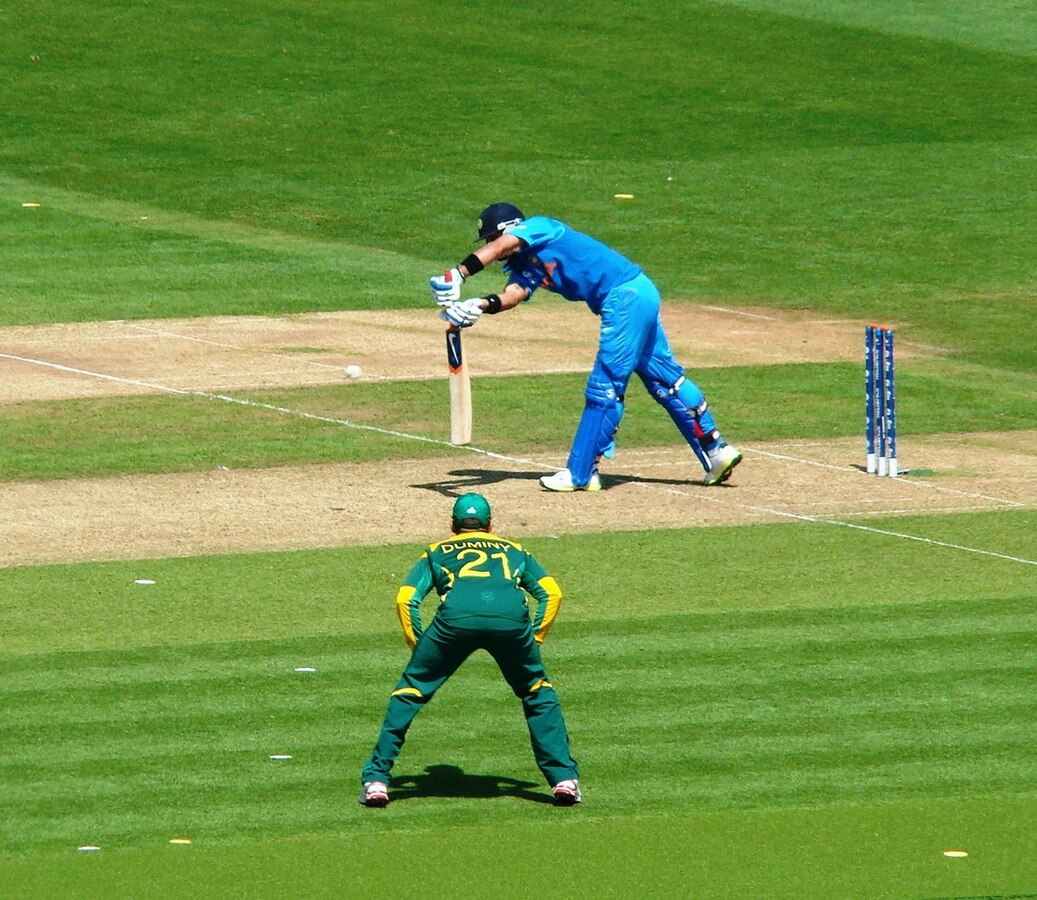Indian cricket selection patterns reveal two distinct treatment standards – one for established superstars and another for emerging players. Recent data shows how reputation, commercial value, and leadership roles influence retention decisions beyond pure statistical performance.
Latest BCCI Policy Changes Impact Selection
The BCCI has implemented new mandatory domestic cricket participation rules in 2025, requiring all players to actively participate in domestic matches to remain eligible for national team selection and central contracts. These policy changes came after India’s poor Test performances against New Zealand and Australia.
Recent selections continue this pattern, with chief selector Ajit Agarkar acknowledging that in-form players like Karun Nair, who scored 752 runs in the Vijay Hazare Trophy with five centuries, couldn’t find room in the 15-member Champions Trophy squad despite extraordinary form.
Established Stars Who Survived Extended Poor Form
Sachin Tendulkar: The Untouchable Legend
The batting icon faced multiple lean patches without facing selection pressure. In early 2004, Tendulkar managed just 81 runs in three Tests, including a duck, yet selectors maintained complete faith. He responded with an unbeaten 220 in Sydney. During 2006, he endured 13 Test innings without a fifty, accumulating only 335 runs at 27.91. Throughout this entire stretch, selectors showed zero hesitation in retaining cricket’s biggest commercial asset.
VVS Laxman: Middle-Order Insurance
The elegant right-hander remained an automatic Test selection for over fifteen years despite several concerning slumps. His ODI career ended in December 2006, making him primarily a Test specialist in his later years. His scoring rate had slowed considerably in Tests by 2009-2011, yet he maintained his place until his final Test in January 2012.
MS Dhoni: Captain’s Privilege
Despite his white-ball finishing reputation, Dhoni’s 2018 output fell sharply. He managed just 275 ODI runs at 25.0 across 13 innings – his lowest annual average since debut. In the Asia Cup, he scored only 77 runs in four innings at 19.25. Yet he retained the No. 6 spot through subsequent tours and captained once in Rohit Sharma’s absence during the 2018 Asia Cup.
Virat Kohli: Commercial Superstar Protection
The former captain endured 1,021 days without a century from November 22, 2019, to September 8, 2022, spanning 83 international innings. He remained an automatic selection across all three formats despite this prolonged slump. His drought ended with 122* against Afghanistan in the 2022 Asia Cup, validating selector patience.
Cheteshwar Pujara: Test Specialist Shield
A BCCI insider revealed Pujara hadn’t scored a Test century in three straight years (2019-2022) while averaging barely over 30. The No. 3 batsman endured 52 Test innings spanning 1,443 days without a hundred from January 2019 to December 16, 2022. Selectors kept him through two World Test Championship cycles rather than restructuring the crucial position.
Suresh Raina: Limited-Overs Faith
In 2015, Raina struggled in limited-overs cricket, managing only modest returns across the calendar year. Despite these underwhelming performances, he retained his place in India’s limited-overs sides through the period, reflecting selectors’ faith in his big-match temperament and experience.
Ajinkya Rahane: Vice-Captain Loyalty
The deputy went 20 consecutive Test innings without a hundred between December 2020 and September 2021. His 2021 batting average dropped below 25, yet he retained his position through multiple overseas tours including South Africa, benefiting from his leadership role.
Other Notable Long Ropes
Ishant Sharma maintained his place despite a bowling average of 37.05 through his first 70 Tests – the worst among India’s centurion seamers. KL Rahul averaged just 26 across 28 Tests between 2017-2023 yet remained in squads due to multi-format utility. Rohit Sharma waited four full years for his third Test century after debut but retained his place until finding success as opener.
Players Facing Swift Exclusions
Immediate Dropping Cases
Several talented players faced quick exits after minimal poor performances, creating stark contrasts with star treatment.
Wriddhiman Saha debuted in January 2010, scored a duck in the first innings and 36 in the second, then found himself out of the side for the very next Test.
Prithvi Shaw was benched after scores of 0 and 4 at Adelaide in 2020 and never received another Test opportunity despite heavy domestic run-scoring.
Murali Vijay suffered twin ducks in the second Test at Lord’s in 2018 and was dropped for the very next match despite being a senior opener. His series ended after just four innings totaling 26 runs.
Abhinav Mukund received his Test debut in June 2011, posting scores of 0, 81, 2, 16 in his first four innings. Without a single fifty beyond that 81, he was dropped immediately for the third Test and never returned.
Yuvraj Singh managed only 47 runs in two home Tests in October 2004 and was dropped immediately for the third match, even as he remained a white-ball regular.
Recent Quick Exits
Karun Nair scored a triple century (303*) in December 2016 but was dropped after just four subsequent Test innings with scores of 26, 23, 5, and 0. His next Test fifty came only in August 2025 – a gap of 3,149 days.
Hanuma Vihari managed only one fifty in his final 10 Test innings before being axed after Edgbaston 2022 without explanation from selectors.
Mayank Agarwal was omitted after 10 Test innings yielding just two fifties and an average around 21 between January 2021 and May 2022.
Ambati Rayudu was India’s ODI No. 4 heading into the 2019 World Cup but despite finishing as India’s top run-scorer with 190 runs at 63.33 in the 2019 New Zealand ODI series, he was axed in favor of Vijay Shankar.
Aakash Chopra served as opener between October 2003 and October 2004, amassing 437 runs at 23.00 in 10 Tests with only two fifties. After those 10 matches, he was permanently excluded despite having over 10,000 first-class runs.
More Posts
Performance Duration Rankings (Ascending Order)
Based on documented underperformance periods before exclusion or continuation:
Shortest Patience (1-4 innings):
- Wriddhiman Saha: 2 innings
- Prithvi Shaw: 2 innings
- Murali Vijay: 4 innings
- Abhinav Mukund: 4 innings
- Yuvraj Singh: 4 innings
Brief Patience (7-13 innings):
- Aakash Chopra: 10 Tests
- Hanuma Vihari: 10 innings
- Mayank Agarwal: 10 innings
- MS Dhoni 2018: 13 ODI innings
- Sachin Tendulkar 2006: 13 Test innings without fifty
Moderate Patience (15-27 tests/series):
- Ambati Rayudu: Single series
- Suresh Raina 2015-16: Multiple series
- Ajinkya Rahane: 20 Test innings
- Rohit Sharma early career: 27 Tests
Extended Patience (50+ innings):
- Cheteshwar Pujara: 52 Test innings (1,443 days)
- Ishant Sharma: 70 Tests with poor average
- Virat Kohli: 83 international innings (1,021 days)
Current Selection Committee Structure
Since July 4, 2023, Ajit Agarkar has served as Chairman of the Senior Men’s Selection Committee. The BCCI finally scrapped the zonal system in September 2016 following Supreme Court-ordered Lodha Committee recommendations, though they retained five selectors instead of the recommended three.
Commercial and Strategic Factors
The data confirms distinct treatment levels based on player status and perceived value. Established players with prior achievements receive significantly longer opportunities to regain form compared to newcomers or fringe players.
Commercial considerations, leadership roles, and multi-format utility appear to influence selection patience beyond pure statistical performance. Players like Kohli, Dhoni, and Tendulkar maintained places during extended poor patches that would have ended careers of less established teammates.
Recent Team Performance Context
India recently won the 2025 Champions Trophy undefeated, defeating New Zealand in the final. However, they had a poor Test season, losing 3-0 to New Zealand at home and failing to win in Australia, missing World Test Championship final qualification for the first time.
The documented selection patterns span multiple decades and formats, indicating this philosophy remains consistent across different leadership groups within Indian cricket administration. Success rates from extended patience show mixed results – while players like Rohit Sharma and Ishant Sharma eventually justified selector faith, others like Rahane eventually lost their places after prolonged struggles.
Conclusion
The documented selection patterns in Indian cricket establish two distinct evaluation standards. Established players have received opportunities spanning multiple years and dozens of innings during poor form, while emerging talents faced exclusion after minimal struggles. The data encompasses specific performance metrics, exact timeframes, and documented outcomes across different eras of Indian cricket administration. Recent BCCI policy changes requiring domestic cricket participation may influence future selection decisions, though the fundamental approach toward star players versus emerging talents appears to remain unchanged.



